If you are an active runner, spending some time on your yoga mat can help you improve your running performance. Runners who practice yoga enjoy the benefits of an overall stronger body with an increased range of motion, giving them protection against injuries as well as increased stamina and power. So, how can you incorporate some quality time on your mat in a balanced and beneficial way?
Runners should do yoga two to three times per week. Runners will benefit from doing varied types of classes each week, such as Yin Yoga for restoring the body, Hatha Yoga for balance and body awareness, and a Vinyasa-style flow for strengthening muscles that are not necessarily used through running.
Depending on your goals in both your running and your yoga practice, you will be able to customize how you spend your time on your mat. Let us take a look at how different yoga classes and poses can help you as a runner.
How to Make a Yoga-for-Runners Schedule
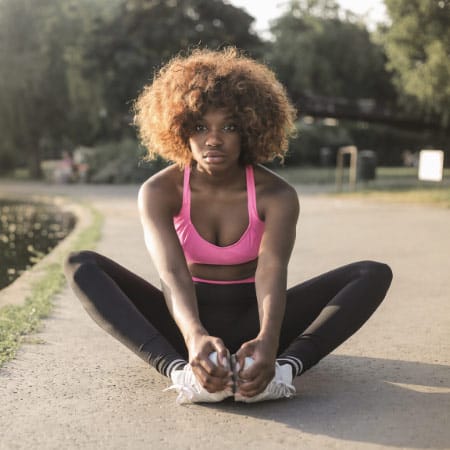
In order to enjoy the multiple benefits that yoga has to offer runners, it is important to incorporate yoga sessions in a mindful and balanced way. Different types of yoga will maximize various benefits, as we will explore below. As you understand what benefits are most important for you, you will be able to create a schedule of classes that will best help your running.
As you make your plan, be sure to incorporate different types of yoga into your schedule. If you begin with two sessions a week, try one restorative Yin class and one slow-flowing Hatha class. Once you get used to this routine, you may consider swapping out one of these for a more intensive Vinyasa-flow class. Each type will give you different benefits, and the right mix will depend on you, your body, and your goals.
Whatever you choose, be sure to listen to your body and make adjustments as needed. You may have a plan to do a Hatha class, but your body is really craving a more restorative class. If this is the case, stay flexible in your mind as you are in your body, and make the switch to the practice that accurately reflects what your body needs.
Now, let us look at the main benefits of incorporating different yoga types into your running routine.
Injury Prevention Benefits
If your main goal in practicing yoga is to prevent injuries caused by running, the good news is that yoga is extremely beneficial in this particular way. This is because regular yoga practice increases your mobility throughout your body and increases your strength, particularly in your core. Developing these two capacities gives your body the best possible opportunity to run freely without being subjected to injury.
Increases Your Mobility
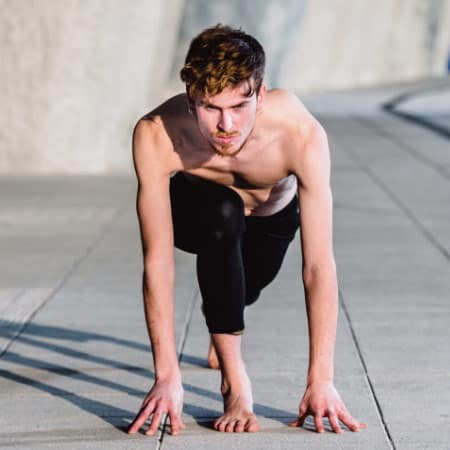
So, what can you do specifically to increase mobility in your body and gain more flexibility? Slower, stretchier yoga classes are a great place to start.
By participating in a Hatha Yoga class, you will be guided through gentle flows that allow you to expand and open all throughout your body without the same intensity of cardiovascular demands in a vinyasa flow class. Practicing these types of flows will help with both your mobility and balance.
If you are looking to slow down even further and linger in each of the poses, making the most of the stretch and the opening that is occurring, you can consider joining a Yin Yoga class.
These classes are designed to stay in one position for up to several minutes, relaxing into the position and breathing deeply into the stretch. These can be very restorative and healing, especially if your body is feeling tired on a particular day.
Here are five poses you can try to increase mobility throughout your body:
Pigeon Pose (Eka Pada Rajakapotasana)
This position is a classic hip opener pose that will allow you to release the tension you are carrying in your hip joints. This asana will also give you a deep stretch in both your glutes and in your groin. This will be a deep and intense stretch that every runner can benefit from practicing. Breathing deeply into the hip sockets during Pigeon is key to experiencing this pose fully.
Warrior II (Virabhadrasana II)
This version of the Warrior Pose is a great beginner pose to open up the body in ways you may not yet be used to. This pose will help expand your chest and shoulders while also opening the hip sockets. Breathing deeply in this standing pose will help bring more space to tight shoulders or hip joints.
Child’s Pose (Balasana)
This gentle, resting pose can be incorporated throughout your flow in order to have a moment of rest while still engaging in some gentle stretching. Child’s pose will gently open your hips while stretching your thighs and ankles. Letting your forehead come to the mat will allow you to relax while breathing into your back and torso.
Cat-Cow (Chakravakasana)
Engaging in the Cat-Cow sequence gives your body a chance to optimize spine health. This gentle movement that beginners can easily practice allows you to bring flexibility and openness to the spine. This movement helps with energy flow as well as mobility.
As you practice this pose mindfully, you will gradually improve your posture over time. This pose targets your spine as well as your shoulders, which are two important areas for better posture.
Cobra Pose (Bhujangasana)
This gentle backbend offers the body many opportunities to open and stretch in ways that runners may not be used to. This position will bring greater strength and flexibility to the spine, and in doing so, the practitioner will be opening and stretching the chest, shoulders, and lungs.
Much like the Cat-Cow motion, moving through a Cobra Pose will bring mobility to your spine, increasing your ability to twist and let the energy flow more freely in your body.
Increases Your Strength
The second component of injury prevention is making sure you are strengthening the different muscles in your body evenly.
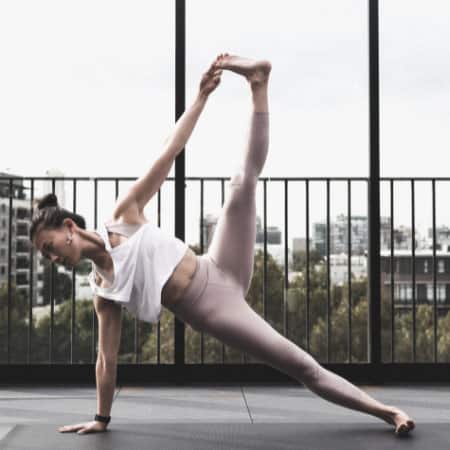
Typically, runners will have well-developed muscles that are required for running, but this can lead to imbalances in the body when it comes to overall strength. Using yoga to even out muscle development will help you feel better and keep your body balanced while helping to prevent injury.
If you are looking to increase your strength, you will want to focus on either Hatha Yoga classes or Vinyasa Flow/Power Yoga classes. Hatha is the gentler of the two options, but with time and practice will add to your strength in a balanced way. Vinyasa classes are the ones that will get your heart rate pumping and will give you plenty of chances in class to use your strength and push your physical limits to their edge.
While these power yoga classes are great for strengthening, be careful not to overdo it if you already have a demanding running routine. Doing an intensive yoga class like this once a week should be a good compliment to a rigorous running schedule. Consider a restorative or gentle class for your other weekly choice.
Luckily, yoga poses for building strength can be more varied and exciting than doing sit-ups or push-ups over and over. Let us take a look at some poses that will keep your interest by adding variety to your strength-building routine.
Reclined Eagle Pose (Supta Garudasana)
This variation of Eagle Pose will allow you to strengthen your core while stretching your shoulders and keeping your thighs strong. You can incorporate a sit-up-like movement into this pose for additional strengthening benefits.
Additionally, you can practice Eagle Pose anywhere for a quick ab workout. By sitting in an upright position in a chair, you can engage your core as you twist into your Eagle Pose. This modified pose makes for a nice break to take while at work or anywhere for a few moments of core activation during your day.
Boat Pose (Navasana)
This yoga pose is another great pose that will add to your core strength while benefiting other parts of your body at the same time. Holding this position requires you to activate your core while strengthening your hip flexors. Additionally, regular practice of the Boat Pose will also add strength to your spine.
For a more challenging variation, you can move your legs in and out slowly or adjust the angle you hold them at. You will be able to vary the intensity of this pose on your core muscles through your leg movements.
Warrior III (Virabhadrasana III)
This Warrior Pose will engage your body in all kinds of different ways. As you balance on your one leg, with your arms extended forward and one leg extended back, you will be strengthening and balancing your body. This position will strengthen various muscle groups, including your core and whole back body. Here, the back body includes everything from your shoulders, back muscles, hamstrings, and calves.
Bridge Pose (Setu Bandha Sarvangasana)
This pose cares for two areas that can be easily neglected in runners: the glutes and the hips. This gentle pose will allow your hips to extend and expand while you strengthen your glutes. You will be able to increase the burn in your glutes by, one by one, raising one foot a few inches off the ground. You can repeat this variation on both sides to work each glute individually.
Locust Pose (Salabhasana)
For a great pose that will strengthen both your glutes and abs, you can try the Locust Pose. This pose requires you to engage your core, your glutes, and your inner thighs to lift your limbs against gravity while laying on your stomach. Regular practice of this pose will strengthen each of these important muscle groups to help your running.
Body Awareness Benefits
The practice of yoga is an incredible way to become more attuned to your body. You will explore your physical body very closely in your practice of yoga, slowing down, calming the mind, and being able to perceive the messages your body is sending you.
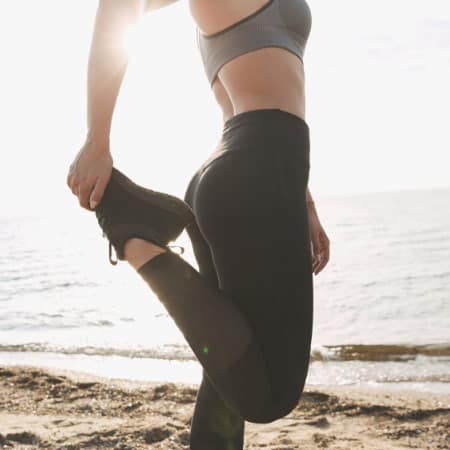
This self-awareness can be applied throughout your life, but particularly as a runner, you will be more attuned to what your body needs at different times in your workout routine.
Increased body awareness and self-acceptance can be achieved in many different ways in your yoga practice. Bringing your full attention to your breath is a great way to start. When you are in a pose, follow your breath through your body and become aware of the sensations where you are feeling the stretch. You may experience expansion in those tight areas when you bring deep breaths and intentionality to your practice.
Additionally, as you move through different flows, it will become easier to coordinate your breath with your body movement. By seeing the relationship between the two, you will be able to stay present with your breath as it helps you move through different sequences.
Finally, if you are looking for some specific poses to gain greater awareness of your body, several balancing poses are a great place to start. By practicing Crow Pose (Bakasana) or Tree Pose (Vrikshasana), you will start to feel how slight shifts in your body impact your balance and ability to maintain the pose.
As you continue to practice these balancing poses, you will be able to stay longer in each pose as you begin to understand your body more intimately. You can move on to increasingly advanced arm balances if you enjoy the physical challenge and body/mind unity that these types of poses require.
Mental Health Benefits
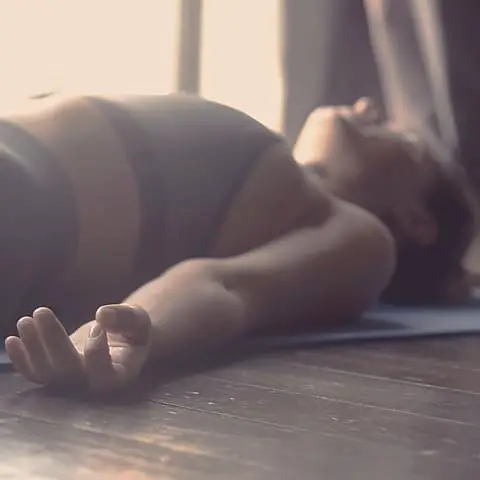
Of course, no article about yoga would be complete without mentioning the plentiful mental health benefits that yoga offers. As you move through your yoga journey, you will naturally acquire patience as you improve with certain poses and see other poses that are still far off from your current skill level.
There is no endpoint in yoga. It is an ongoing practice that allows your body to open and allow you different experiences every time you step on to the mat. It will give you a counterpoint to running, where the goal is to be the fastest you can be.
You can maximize this practice’s mental health benefits by staying as aware as possible in each pose. If you find your mind wandering, you can always use your breath to bring you back to the present moment.
For one particular asana to try here, you can remember to practice Corpse Pose (Savasana) at the end of every practice. By engaging in this pose, you are giving your body and mind the chance to absorb all of the benefits from your practice.
This asana can be a meditative moment of stillness where your body and mind are calm, and it is a wonderful pose to enjoy before getting off the mat and back into daily life.
Additional Tips for Runners Who Do Yoga
Now that we have explored different poses that will bring runners certain benefits, let us look at some overall tips when incorporating yoga into your running routine.
Stay Committed
If you are looking forward to the benefits we have explored above, it is important to stay committed to your yoga practice. The benefits of yoga will slowly build over time as you go deeper into your practice. It is very common to feel the benefits throughout your daily life, which is to say the time you are off the mat. However, it is necessary to show up on the mat 2 to 3 times a week to keep this commitment to yourself.
That is not to say you must push yourself too far, however. We have discussed the importance of listening to your body, and that continues to be true. If you do not feel up for the power yoga class you had planned on, do not use this as an excuse to skip the day altogether. Instead, spend a shorter time on your mat practicing some gentle, restorative poses that nurture your body.
You will find the balance between commitment and giving the body what it needs. Finding this balance is all part of your individual yoga journey.
Take Advantage of an At-Home Practice
While it is important to attend live yoga classes in the beginning so you can learn the proper alignment for the poses, taking advantage of an at-home practice is a great way to adjust your time on the mat to precisely what you need. You can find many Youtube videos that will offer all kinds of different yoga flows so you can have some guidance in the comfort of your own living room.
Final Thoughts
Introducing a yoga practice to your running routine is a great complement that your body will thank you for. By giving your body more tools to prevent injuries, build strength, rest, and recover effectively, you’ll be wondering why you did not combine these two disciplines sooner.





